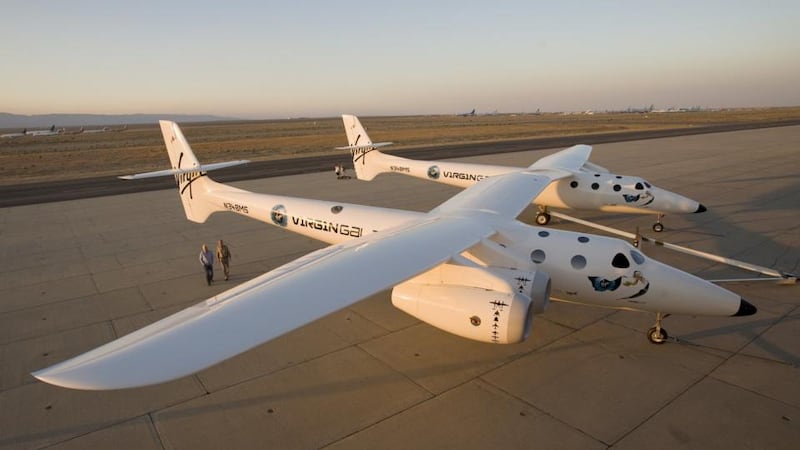The final frontier for capitalism has been reached. Whether its pre-orbital, orbital, balloon-based flight or a good old-fashioned rocket you’re looking for, options for space tourism are increasing. Even sub-orbital hotels are on the way.
Jumping on this space bandwagon is deodorant company Lynx, which has launched a marketing campaign offering a number of its customers the chance to win a seat on a sub-orbital flight into space.
The Lynx Space Academy is a significant milestone in terms of what space travel represents on the human psyche. All of a sudden, the gravitas and significance of being an astronaut wanes and the perspiration associated with a rollercoaster ride feels more apt an image to conjure up.

What makes this marketing campaign special is the chance it affords “regular folk”. In 60 years of space travel, the only people lucky enough to have the opportunity have either been highly-trained astronauts or incredibly wealthy individuals.
Still, even in this brave new commercial space age, money alone is not enough to guarantee a ticket. The significant physical and psychological risks involved in space travel – particularly with orbital flight – mean that every potential space tourist must undergo a rigorous assessment before getting the all-clear.
"Sub-orbital flights are what are being offered by the likes of Virgin Galactic and the Lynx Space Academy," says Danny Gleeson from Space Industry Skillnet, an enterprise-led training network that organises training for Irish companies who are working with the European Space Agency (ESA) in support of its space programmes.
"It's about an hour's experience with 15 minutes of zero gravity. With Virgin Galactic, the passengers will be transported in a rocket by a carrier aircraft called the White Knight . You are then taken to about 50,000 feet [approximately 15.5km], at which point the rocket is released.
“Once the rocket reaches a high enough altitude and stops at the top of its arc, you enter zero gravity. The Virgin Galactic rockets are unpowered upon re-entry into the atmosphere. Essentially they go up like a cannonball, and return safely through some fancy flying skills on the part of the pilot.”These flights are reportedly retailing at €154,000 per person and Virgin says it has already sold more than 400 seats.
Into orbit
Orbital flights are more complicated and a lot more expensive. "Sub-orbital vehicles are like airplanes that go very high while orbital flight requires a real spaceship," says Gleeson.
"US companies like Sierra Nevada and Blue Origin offer carrying citizens into orbit and travelling around the Earth on a 90-minute journey. And, of course, the Russians have been taking tourists and astronauts to the International Space Station (ISS) for between $20 and $60 million [€15-45 million] a piece for the last decade."
For now, the commercial “space race” is happening in the sub-orbital market. While $200,000(€153,000) might sound like a lot of money for an hour’s entertainment, it is significantly more affordable than orbital flight options up to this point.
A calmer space tourism experience is offered by zero2infinity’s Bloon “near-space ship”, where travellers are taken through the atmosphere pulled by a balloon to an altitude of 36km. This takes about three hours and participants can have dinner or a drink while on board. The company could be taking its first passengers in 2014.
US company Bigelow is taking pre-orbital space tourism seriously. “As well as developing inflatable space stations to sell to Nasa as additional storage units for the ISS, Bigelow are looking at developing a space hotel in low-Earth orbit,” says Gleeson.
The technology needed for such ventures already exists. Now it’s all about trying to bring costs down. “To put things in perspective, shipping cargo into space costs on average £20,000 [€23,300] per kilogram,” says Dr Ronan Wall, programme manager at Moog Inc, which designs and manufacturers (among other things) precision motion-control products and systems for satellites and space vehicles.
“The propellant costs and whole infrastructure around launching are very costly and that’s before one even introduces the human element into the equation, which raises a whole new set of safety, insurance and legal concerns.”
Space tourism opens up several legal questions that are difficult to answer armed only with earth-based jurisprudence. “Under US law, what is referred to colloquially as ‘space tourism’ is called ‘commercial human spaceflight’,” says Prof Joanne Irene Gabrynowicz, director of the National Center for Remote Sensing, Air, and Space Law, at the University of Mississippi School of Law.
“The US government and operators have a risk sharing regime in which the [government] indemnifies licensed commercial operators for third-party liability. [Tourists] are not indemnified. They have to obtain their own insurance for themselves and for third-party liability. There is little international space law that is applicable to commercial human spaceflight.”











